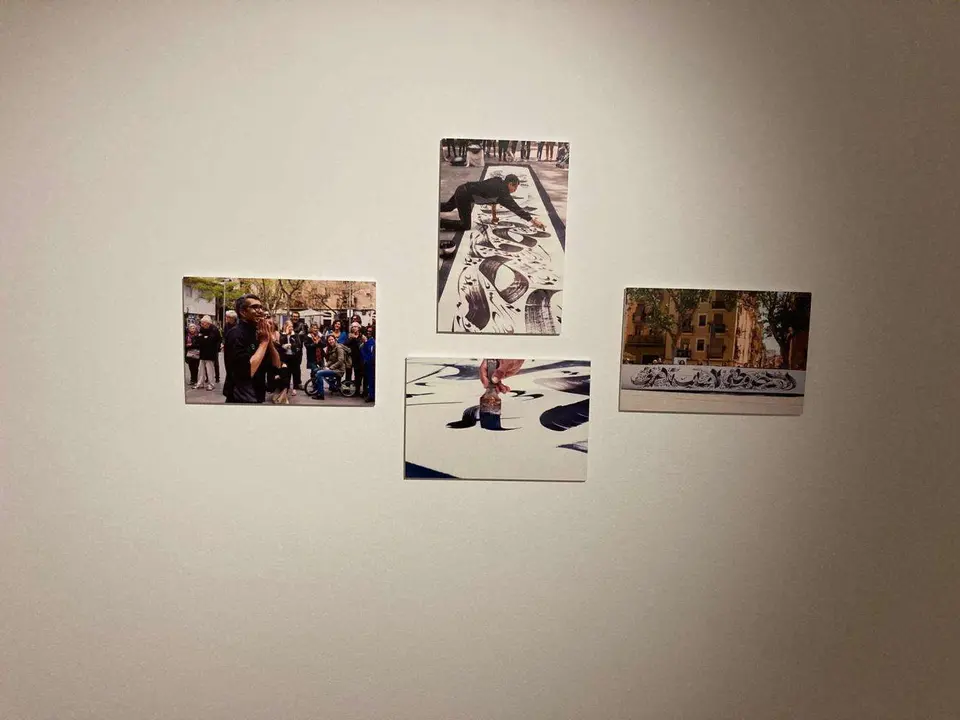Jiwar, the creative neighbourhood at Casa Árabe

Literally, jiwar means neighbourhood in Arabic. A concept which can be reduced to the mere juxtaposition of lands and people or which, on the contrary, can go much further in that this closeness can become more intimate, creative, and therefore give rise to important explosions of the capacity of men and women to bring forth all kinds of discoveries.
Casa Árabe in Madrid is currently showing a selection of works that are the result of artistic residencies by creators from the Mediterranean area at the international headquarters of Jiwar Creació y Societat in Barcelona, until 16 January. The project is based on the recurrent obsession to create bridges of dialogue and interaction between disciplines and between people and communities, and the result is that artistic creation is a palpable fact of transmission of value and knowledge.

As the curator of the exhibition and director of Jiwar, Mireia Estrada, states, "we have assumed our role as mediators, in which what has interested us most has been to accompany the creative processes and widen the spaces of exchange and interlocution, aiming towards the organic ideal of 'sharing the city', an expression coined by the thinker Marina Garcés".
Faithful, then, to the literal concept of jiwar, the project claims artistic creation as a tool for transformation and reflection on the city, and also as a new possibility of interrelating with it.

Amado Alfadni, Ro Caminal, Yassine Gaidi, Elif Gülen, Sadik Haddari, Mehdi Harzallah, Farah Ben Mansour, Fatima Mortada, Azza Abo Rebieh, Alaa Satir and Haya Zeatry express this creative neighbourhood in this group exhibition. In the words of Mireia Estrada, two meanings that form a dynamic equilateral triangle are added to this neighbourhood: firstly, the geographical and cultural neighbourhood of the Mediterranean peoples. Secondly, the neighbourhood between artistic disciplines, promoting exchanges and work in common with diverse languages.
Jiwar offers a summary of both its fragility and the strength of independent projects, those that work quietly with depth, providing value outside of the spotlight and trends.

Jiwar itself, together with the NovAct and Al Fanar foundations, promotes another project, the Xabaca. The success of its first call in 2017 is shown by the fact that there were almost three hundred candidates, of which seven women from different disciplines from Arab countries were selected to share work space, dynamic conversations and visits, establishing a network of creative and personal complicities. The common goal was to create a network - that means xabaca - of artists and social agents in favour of these women, as potential generators of social change in their own countries or wherever they choose to live.
Coming from contexts of censorship, and in some cases repression, they worked to share tools to promote freedom of expression and the sublimation of creative and personal development, based on specific training on strategies for social change and non-violent struggle. All of this is leading to an increasingly visible break with the stereotypes clumsily bestowed on the misnamed 'Arab woman' on the western shore of the Mediterranean.

Among the many vital examples that have emerged from this project is that of an artist like Alaa Satir, who, back in Sudan, experienced first-hand the events of the political revolution in her country, taking an active role as a street artist with her murals on the walls of Khartoum. Works that are travelling around the world through the media and social networks.
We should also highlight the initiative of the production company Otoxo, which gave light to the spirit of Xabaca through the documentary "Borders and promises", which follows the vicissitudes and vicissitudes of three artists during their residence in Barcelona.

The Moroccan calligrapher Sadik Haddari's message "The earth is my home and humanity is my family" stands out for its monumentality in the exhibition. The first time he did this was in front of the neighbourhood of Gracia in Barcelona. He wanted to show that setting foot in the square is essential for what it represents in terms of community, of being together, of sharing. He himself states that "it is from an ancient Mediterranean perspective that we conceive of the square as a place that flows, that passes, that transforms, that is anarchic. A place where everything is possible".
Isn't art supposed to change the world, wondered Fátima Mortada, who is exhibiting a sample of what she herself describes as "a small beginning of research into female sexuality". She recognises that the female body has been demonised and considered dangerous in both Arab and European societies. This is why she has no qualms about calling her art, art in general, a transformative political activity.









